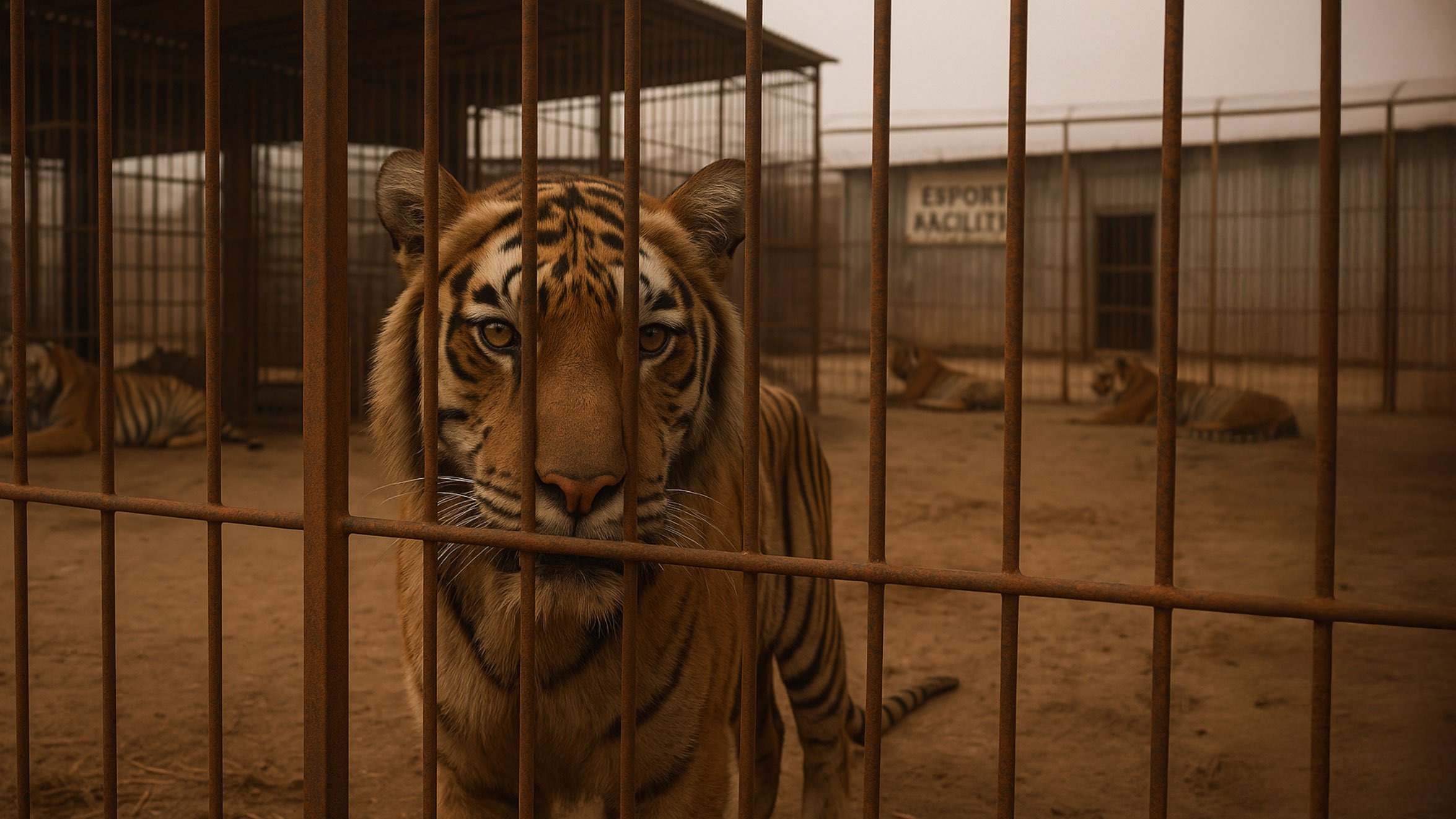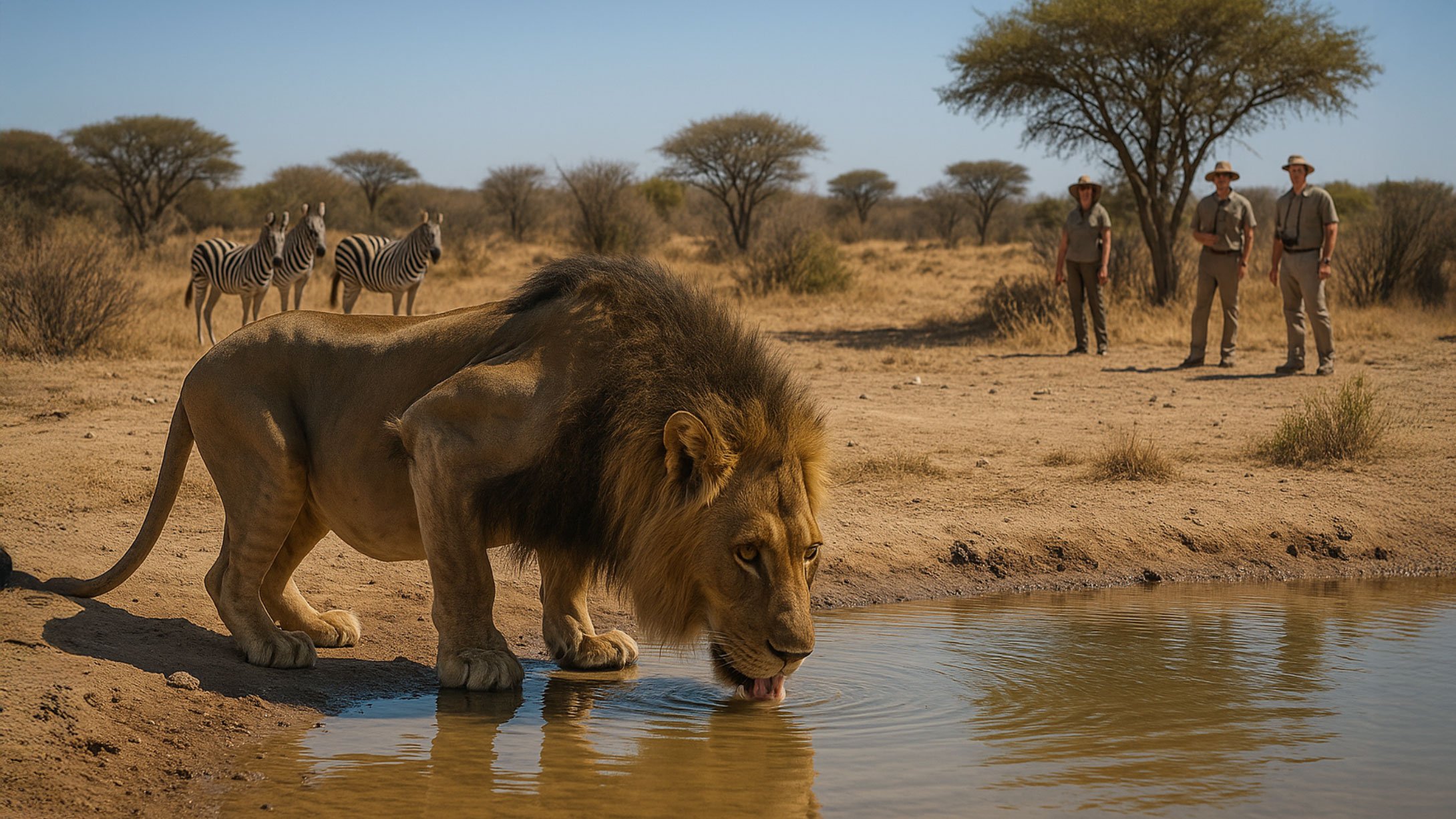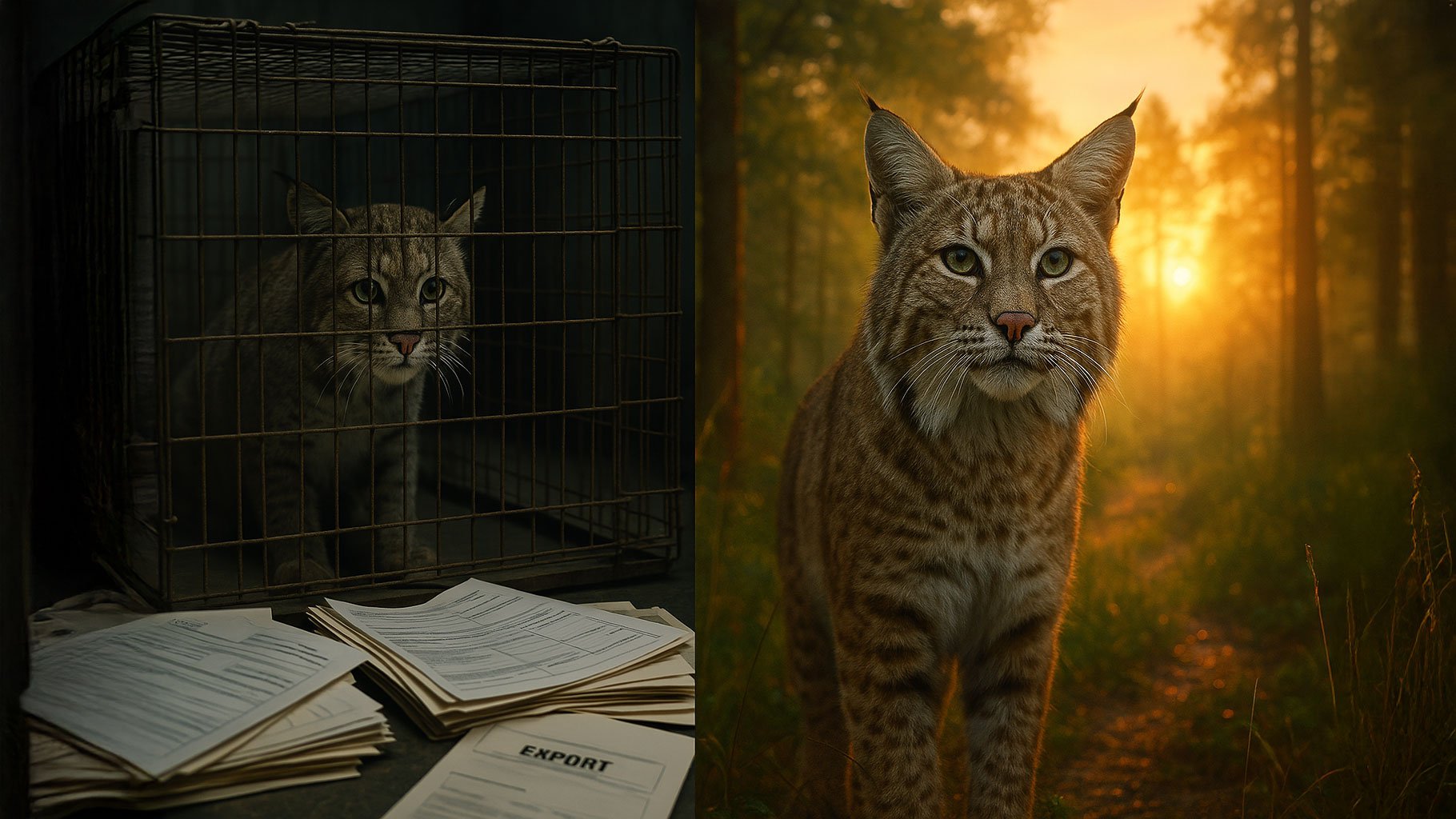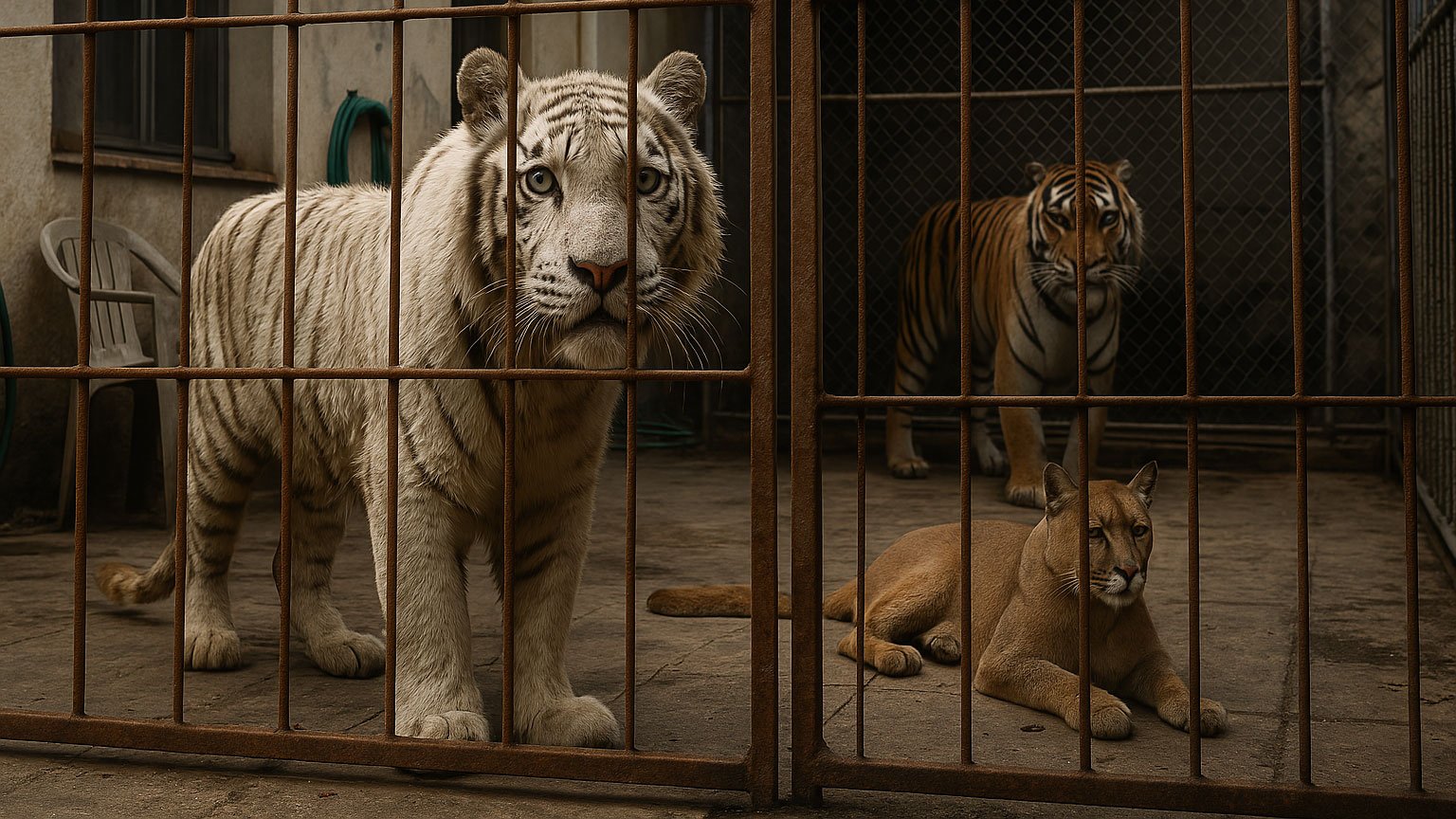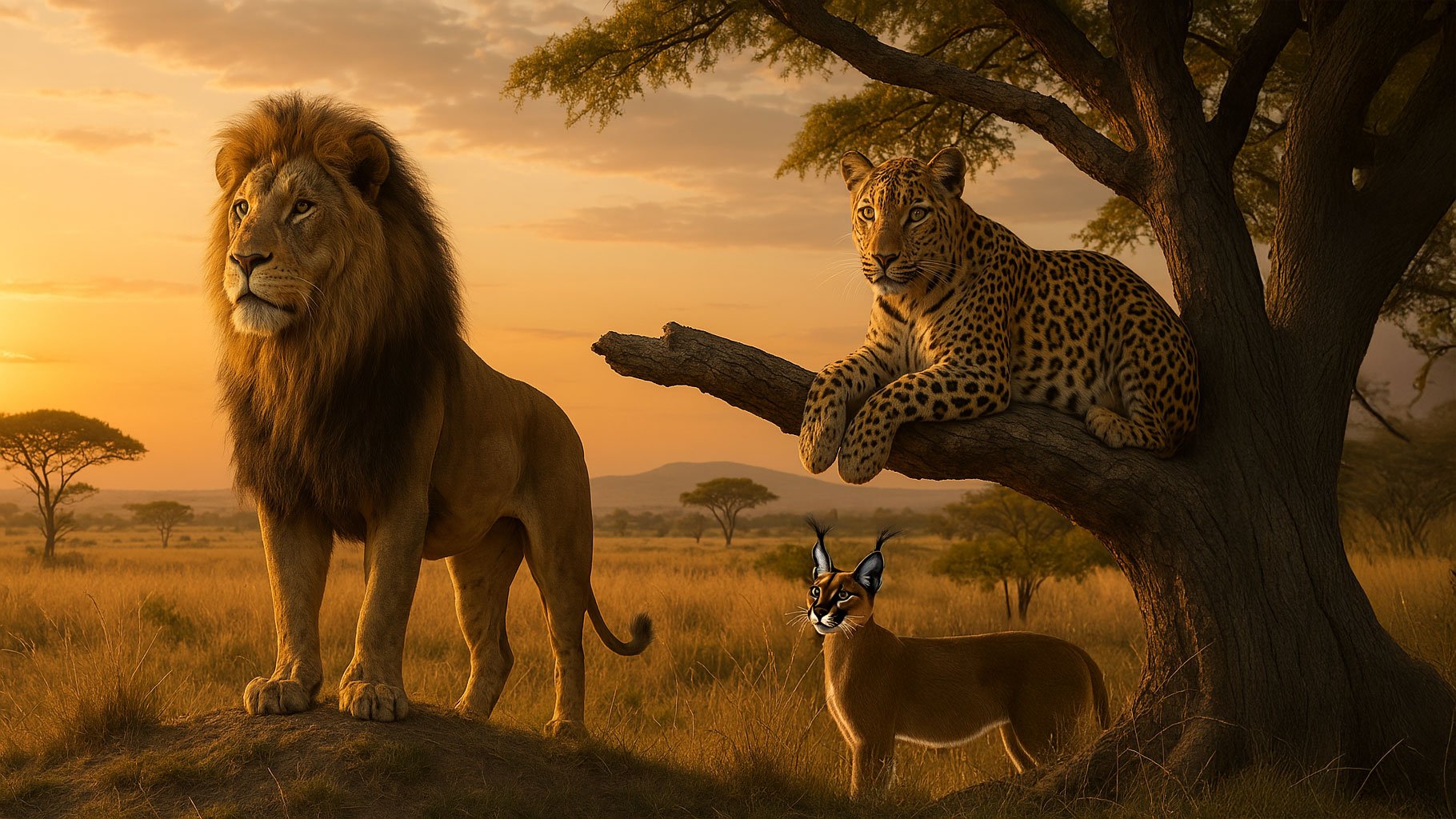Caged for Profit: South Africa’s Big Cat Breeding Crisis and the Fight for Their Freedom
In the heart of South Africa, where wild beauty still clings to open plains and ancient mountains, a darker story unfolds—one of exploitation disguised as conservation, of profit cloaked in bureaucratic denial. Behind the high fences of 72 tiger breeding facilities, unseen by tourists and shielded by legal loopholes, more than 600 tigers live out their days in captivity. Not for education. Not for rescue. But for commerce.
This is not a sanctuary. This is South Africa’s unregulated predator breeding industry.
Tigers Don’t Belong Here
Tigers, majestic and endangered, don’t naturally roam African soil. And yet, South Africa now holds the largest number of captive tigers outside Asia. The reason? A growing, lucrative trade in their live bodies and, more disturbingly, their parts. According to CITES data, since 2004, South Africa has exported 3,545 live big cats and over 34,000 parts—including 517 live tigers.
Official statements claim these tigers are shipped to zoos and parks for non-commercial purposes. But the truth is murkier. The very loophole enabling this trade lies in the flick of a pen—one letter changed on a permit can turn a tiger from "non-commercial" to "commercial," all without scrutiny. Once exported, there's virtually no way to track how these animals are treated or used. Are they displayed in glass cages? Are they slaughtered for bone wine and body parts? No one knows. No one checks.
A Government Shrugs
In 2020, a government panel recommended that the predator breeding industry be phased out. By 2024, a ministerial task team reiterated this call. Still, the government drags its feet. A 2025 response to Parliament revealed no plans to report to CITES how tiger breeding might impact wild populations, despite a clear directive: countries with intensive breeding must “restrict captive populations” and cease trading in parts.
Instead, South Africa argues that because its tiger breeders aren’t CITES-registered, they can’t possibly be commercial. This circular logic is dangerous. Just because no one declares the profit doesn’t mean it’s not happening.
Welfare Forgotten
While this bureaucratic dance continues, the animals suffer. Only two South African provinces conduct regular inspections. Limpopo has no provincial regulation at all. The North West province—home to many of these facilities—didn’t even respond to requests for oversight information.
In this vacuum, tigers are bred in conditions so substandard they often lack medical care, enrichment, or appropriate space. The welfare abuses are not hypothetical—they are documented in reports like the 2024 Four Paws exposé that reignited public outrage over South Africa’s predator trade.
And it’s not just tigers. An estimated 8,000 captive lions languish in the same broken system. The cycle is always the same: cubs bred for selfies, adults used for canned hunting or exported, bones sold to Asia for traditional medicine.
The Global Cost
This isn’t just a South African issue. When one country enables the commodification of endangered species, it weakens global conservation efforts. South Africa’s failure to properly regulate or even acknowledge commercial breeding undermines CITES itself—the very treaty designed to protect wildlife from extinction through trade.
Worse, it sets a precedent. If tigers can be farmed in Africa for body parts under the guise of non-commercial trade, what stops other nations from following suit?
The risk is real. Wild tiger populations are already precarious, numbering fewer than 4,000 across their native range. Allowing legal cover for captive trade only fuels demand, encouraging poaching and illegal trafficking across Asia.
Time to End the Lies
The myth that predator breeding is “conservation” must end. Real conservation happens in the wild—not in wire pens, not in spreadsheets, and certainly not under a cloak of permit codes.
We are witnessing the sixth mass extinction. Every tiger matters. Every lion matters. And every policy loophole that turns a blind eye to their suffering is a step closer to ecological collapse.
But there is still time.
South Africa has a chance to lead by example, to enforce the CITES directive, shut down commercial breeding, and reinvest in protecting wild habitats where big cats belong. The rest of us have a role too—by refusing to support cub-petting zoos, by demanding accountability, and by supporting organizations that protect wild cats in the wild.
At Big Cat Rescue, we’ve shifted our entire mission to do just that. Our fight continues—not behind fences, but across continents, funding boots-on-the-ground conservation and amplifying the voices of cats who cannot speak for themselves.
Join the Roar
If this story stirred something in you—anger, heartbreak, or the simple resolve to act—then don’t let it end here.
Support organizations that are working to stop this cruelty. Share the truth. Speak out. Because one thing is certain: tigers were never meant to be caged in the name of profit. They were born to run wild.
Learn more: https://www.dailymaverick.co.za/opinionista/2025-06-25-predator-breeding-in-sa-time-for-a-reality-check/






